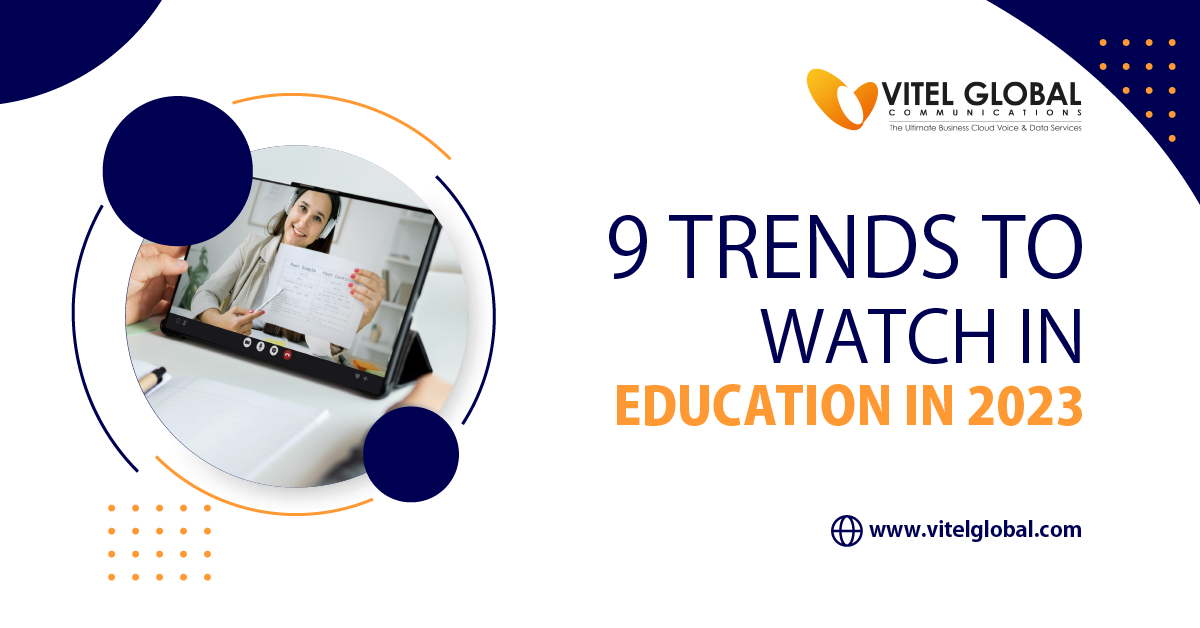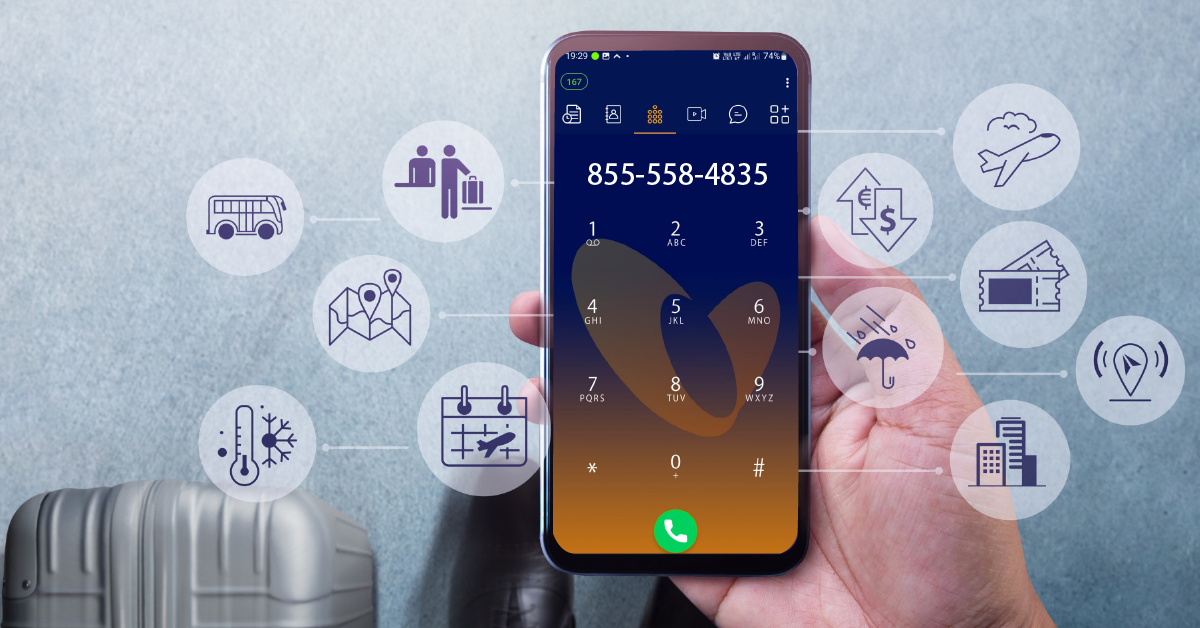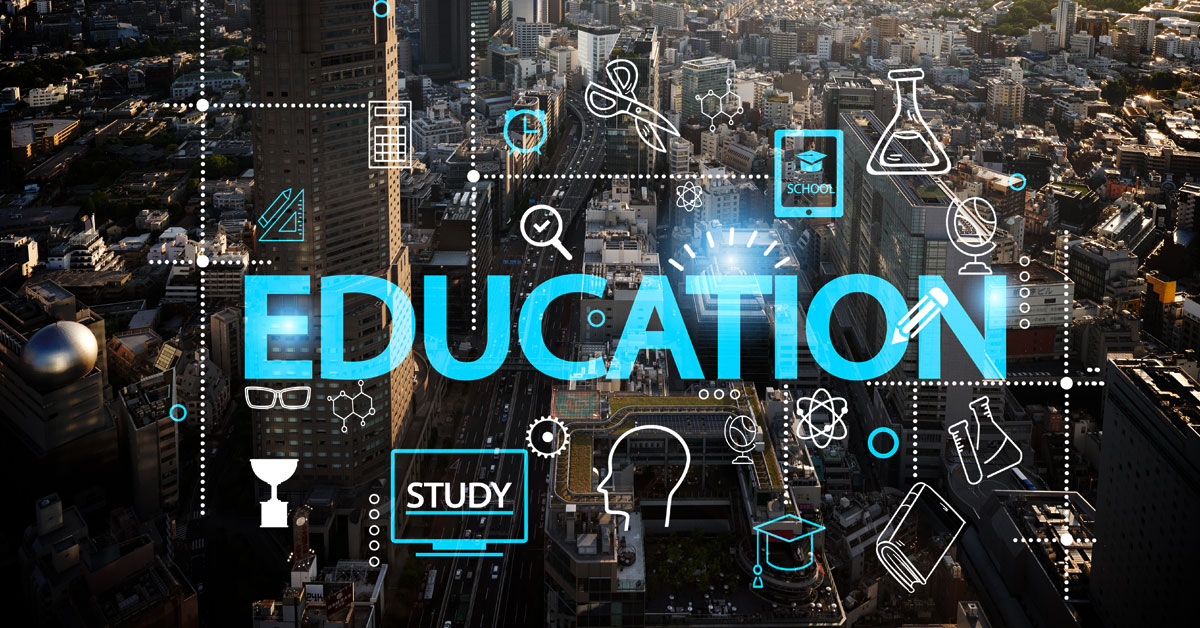Unveiling the Top 9 Education Trends to Look Out for in 2023

5 min read
Stay ahead of the curve with these 9 mind-blowing education trends! Discover the future of learning in 2023. Exciting insights await!
In 2023, will we be using augmented reality to teach children in the classroom? Will AI-powered robots replace teachers in all subjects? Will wired classrooms become a thing of the past as students worldwide take courses and collaborate via virtual worlds?
Online learning has become more diverse. Technology is integrated into the classroom.
The vision for the future of education, and it’s not just. People are working today to make this happen, building tools, settling fights over funding, and even convincing parents to sign their children up for invaluable lessons.
The future will be determined by the decisions we make in the present: How will education be funded? Will there be enough teachers? Even small decisions can significantly impact what type of world our students will live in twenty years from now.
This report outlines nine trends defining education in the next ten years. These trends either reflect or are directly related to the changes already underway. For example, as new technologies become more prevalent, how will we measure our students’ progress in the classroom? And as students’ needs and expectations change, what new kinds of learning opportunities should we explore?
If these trends are successful, they not only significantly impact what happens inside our schools, but they could also lead us down a path toward a future that is much different from the one we are working to build today.
This vision does not mean ignoring or denying existing problems.
Find out the best compatibility with VoIP service providers at low cost and high quality.
Money alone cannot solve our challenges. We know that precollegiate education is at a critical juncture, facing fresh challenges and confusion in the public’s mind. And we know that as we move from an industrializing to a service-based economy, more of our jobs will be contingent on lifelong learning.
But the reality is: We will only solve some of our problems by strengthening the most common features of today’s system. Some of these old features could prevent us from achieving our goals for tomorrow. Not likely. But many educators are thinking about what new trends can emerge for education in the decade ahead.
9 Education Trends
Augmented Reality
In 2023, the technology to create Video conferencing solutions, apps, and student experiences will be widely available.
Augmented reality is a game-changing technology that allows you to explore three-dimensional spaces through your phone or computer screen without needing expensive, bulky hardware.
The demand for this technology expects to grow as the company’s mass market share continues to rise. It projects approximately 17 million primary and secondary students will spend over more hours daily using AR-based apps in 2023.
AR will play an increasingly important role in education, from serving as a documented backdrop for lectures to completely immersing students in the artificial environments of games and tutorials. After all, envision being able to walk around a scaled model of the human anatomy, shifting the view with a turn of your head or by reaching out with your hand.
Collaborative Learning
As students and educators alike use collaboration to meet their needs, the need for good instructional software and more than 100 evidence-based strategies that can be used for any classroom.
Collaborative learning is one of the best ways for teachers to modify and personalize lessons for their students, plus it engages them deeply, personally, and intellectually.
Students Become Less Dependent On Their Parents
Technological advancements like video conferencing solutions have increased students’ time at home. While some parents will continue to work at home, students will spend more time with their parents, with the dependency on collaboration tools.
Gamification
Gamification is a form of game design incorporating game elements into non-game contexts such as social organizations or businesses. The term initially referred to adding game-like elements, like point systems and competition, into non-games to motivate players. Still, it has come to mean using game elements within any context. More than 100 evidence-based strategies can be used in any classroom.
Micro-Learning
Micro-Learning is an often overlooked but compelling way to deliver information when you want to maintain or build a skillset as quickly and efficiently as possible.
Authenticity in Learning
Authentic assessments test a student’s ability to apply knowledge, concepts, and skills in a natural or simulated environment—where the application of knowledge, concepts, and skills is similar to that of the real world. They can include computer simulations of the workplace, such as more than 100 evidence-based strategies that can be used in any classroom.
Digital Learning
Digital learners are becoming a larger demographic in prisons, universities, schools, industry organizations, adult education centers, and homeschools. Virtually every sector of society sees this trend as its benefits become more significant with every new era of technology.
The most potent and effective method/strategy to deliver information are a flipped classroom. It is an approach to education in which the teacher takes a very active role in keeping students engaged actively with content throughout the lesson.
Omni channel Communications System
The numeral one priority for companies in 2023 is how different forms of media will converge in an Omni channel communications system. For many organizations, this will be the most pressing concern of the year due to a need for more preparation and understanding. The ability to effectively communicate with customers, partners, and vendors across each channel is a must because these channels are becoming increasingly blurred.
It is the idea of placing some technology into every nook and cranny of our social and physical communities, giving us access to information wherever we go. It helps to both simplify our lives and allow for greater personalization.
Improve The Core Curriculum
In a competency-based model, students must be able to think creatively, collaborate, research, and write original papers. Students should also understand how to reason logically and apply the rules of algebra or geometry to new situations.
For Instance
Teachers today are often required to spend time preparing lessons and grading papers instead of teaching. They spend so much time training their students that they do not have time to develop relationships with them.
The new educational paradigm will be about providing high-quality communication tools to the students. Unlike in the past, students now have access to a plethora of sources for information, and they need guidance on how to filter and use them responsibly. Paring down what is available to know, not just what is available online, will create a more meaningful educational experience.
Students will have to adapt quickly and learn better from online information. Students must use their prior knowledge and build on what is available. This ability is an essential skill that will translate into higher employee productivity when they enter the workforce.
The success of collective intelligence projects such as open-source software development demonstrates that collaboration can lead to personal satisfaction and excellent productivity enhancement – sometimes even more significant than working alone. As the importance of cooperation increases, there will be an increase in cooperative research and more opportunities for collaboration.
What we call education today is imparting knowledge and taking care of growth and development through facilitative rather than directive approaches.
Several different fields have a significant impact on education, and they are constantly changing. You can expect change for the better as educators strive to find new ways of teaching students. It helps the students how to communicate with one another. To reach high-quality standards in their educational experience.
Conclusion
Virtual phone systems are helpful in the field of education. These are just a few of the many trends colleges and universities will face. In the coming years, there’s no doubt that competency-based education is the way of the future.
Be prepared to make changes as necessary. Make sure that your faculty has experience with competency-based education so that you can adjust as needed. This will also give you the ability to track whether or not students are actually acquiring the skills required.
Transform Your Education Strategy
Learn How the Latest Trends and Technologies Can Help You Stay Competitive and Achieve Your Goals
Published: June 28th, 2023
Subscribe to Our Latest Updates
Get monthly product and feature updates, the latest industry news, and more!





